The C&S Coal Chutes: Pine, Como, Dickey, Pitkin and almost Breckenridge
1234567
... 9











1234567
... 9
Re: The C&S Pine Grove Sandhouse.
|
This post was updated on .
Could well be, certainly my first thought.
But it also could be the Tool House 10’ x 14’ wood that John also referenced. On the other hand, is that a privy over by the west leg of the wye, or could it be the sand house, next to where the ash pit used to be? 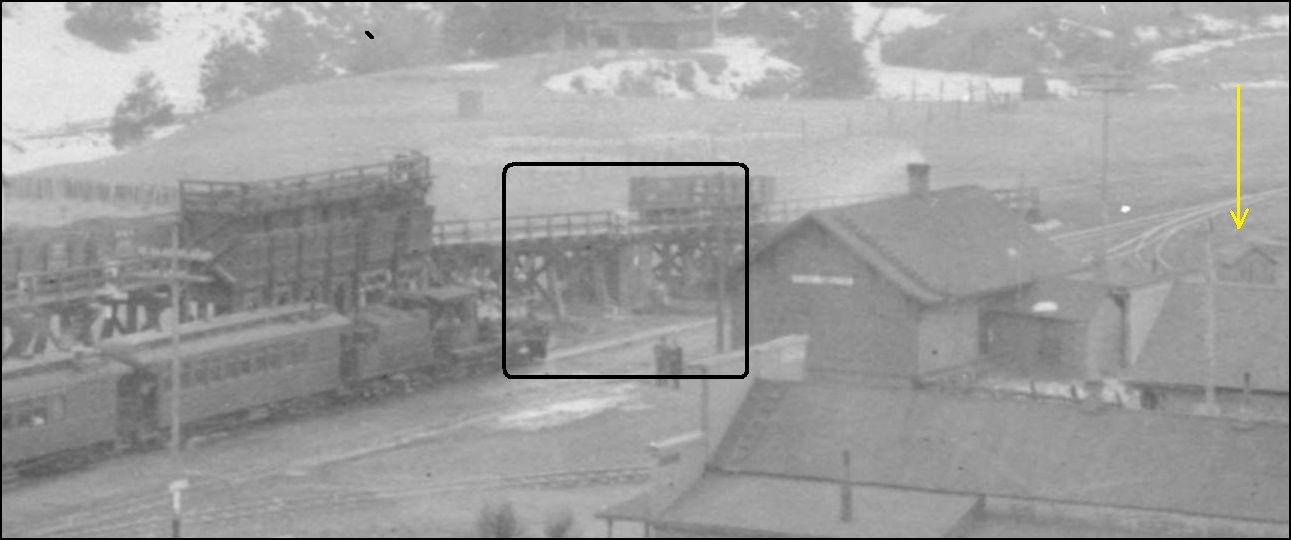 It's pretty far away from the depot to be of convenience on a cold, snowy night: 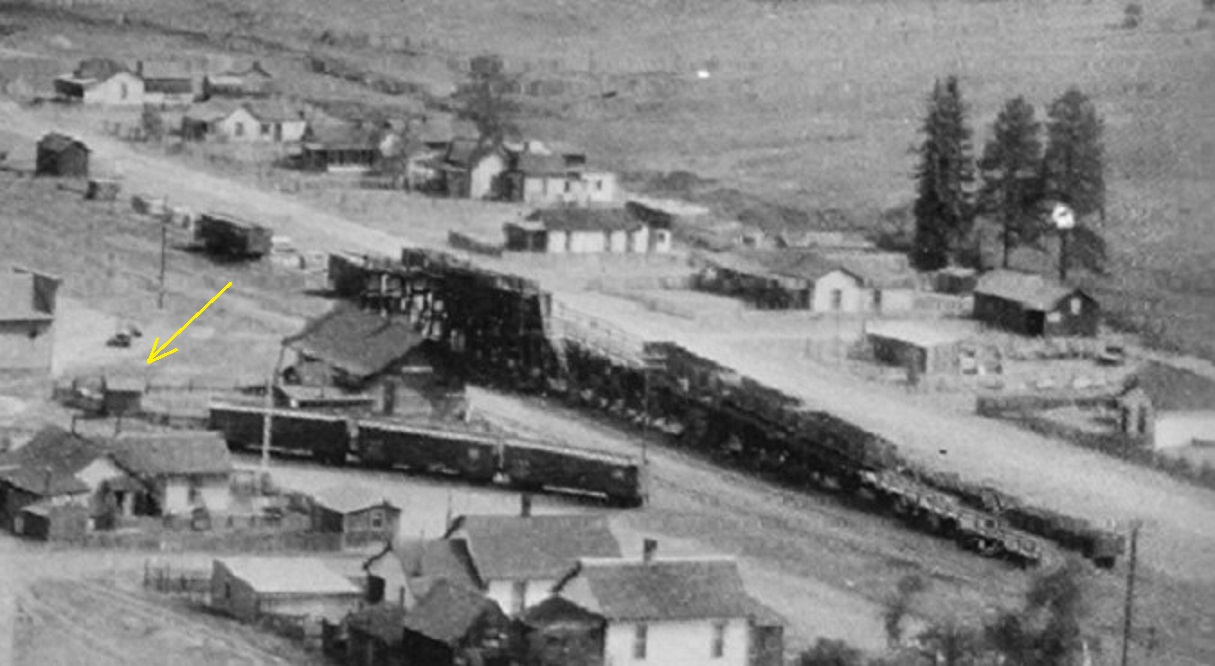 The same building shows up at the edge of the frame in the 1890s McClure photograph, very close to the ashpit: 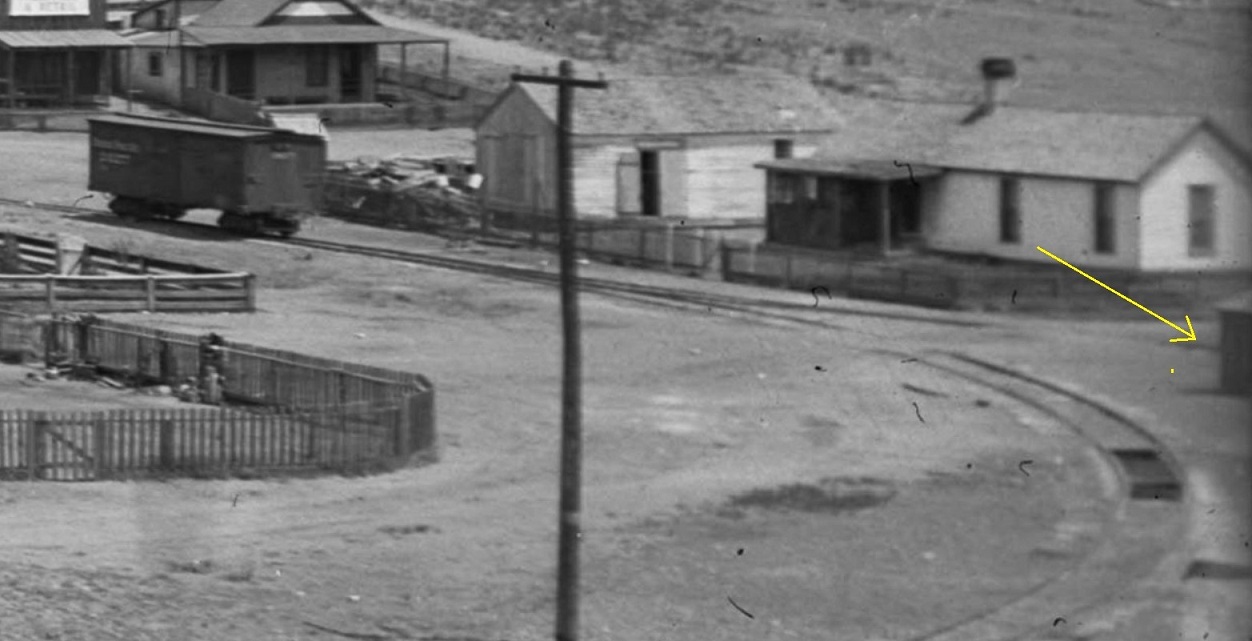 I wonder if the ash pit survived into the late 1920s?
Jim Courtney
Poulsbo, WA |
Re: The C&S Coal Chutes: Four bins? Six Bins? Eight Bins? Twelve Bins?
|
In reply to this post by Jim Courtney
CONTENTS DELETED
The author has deleted this message.
|
Re: The C&S Pine Grove Sandhouse.
|
In reply to this post by Jim Courtney
Hmmm this is getting interesting, I figured Coal and Sand would close together having turned, sanded and fueled countless loco's in the past.
Whereas the Privy would be closer to the Station "out-the-back" and not across the Mainline under the Coalingtrestle, I based that with the assumption Passengers used said privvy. Locos carried their Tools onboard, Sectionmen would require a Toolhouse: was it elsewhere away from the Depot, like further East showing up beside the teamtrack? 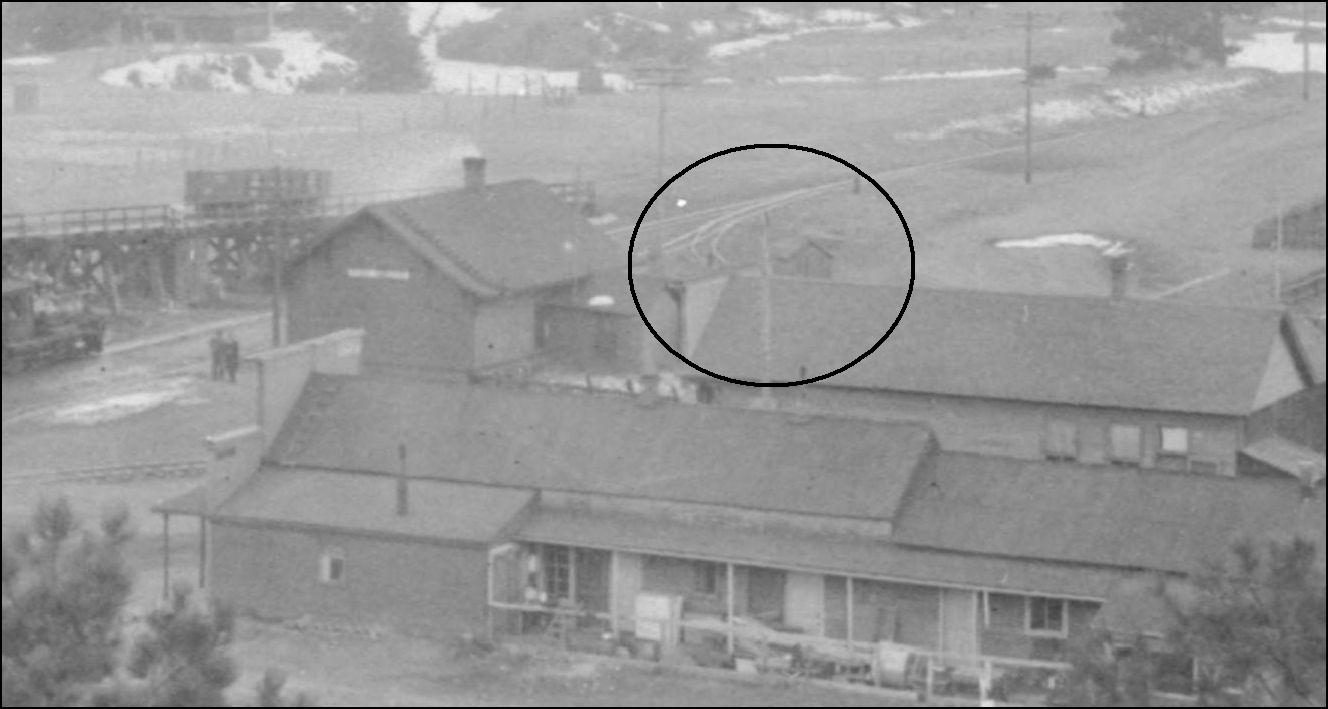 The circled Shed seems to be rather flash for a privvy, but as this picture is earlier than the rebuilt Chutes, was it a Sandhouse?, again awefully flash for that purpose too! The rectangled Shed to the right is what I think would be a Toolshed. It also shows up painted dark in the UPD&G Coaldock photo. 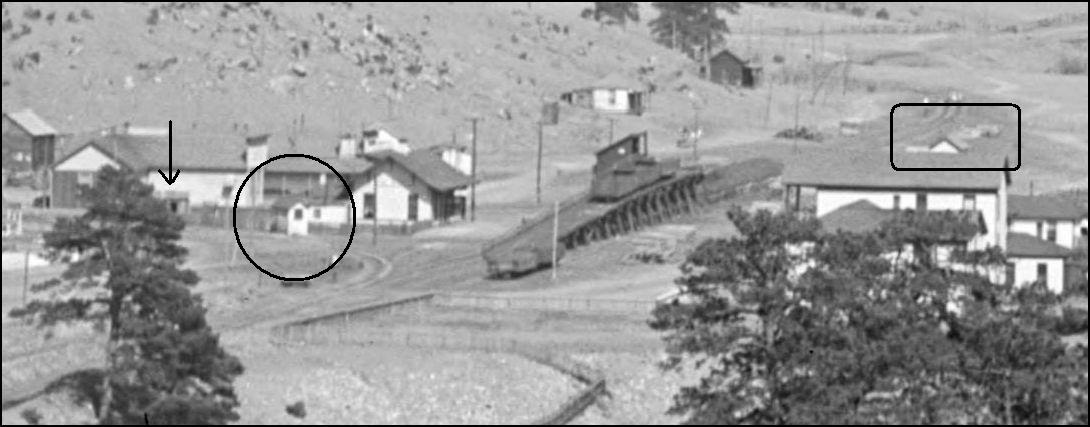 http://digital.denverlibrary.org/cdm/fullbrowser/collection/p15330coll22/id/77809/rv/singleitem There is also an unexplained Shed, very close to the tailtrack of the Wye, however dimensions don't fit with those listed of the Toolhouse. See Joe Creas Trackplan for location here: http://c-sn3-discussion-forum.41377.n7.nabble.com/The-C-S-Coal-Chutes-Four-bins-Six-Bins-Eight-Bins-Ten-Bins-Twelve-Bins-tp4269.html 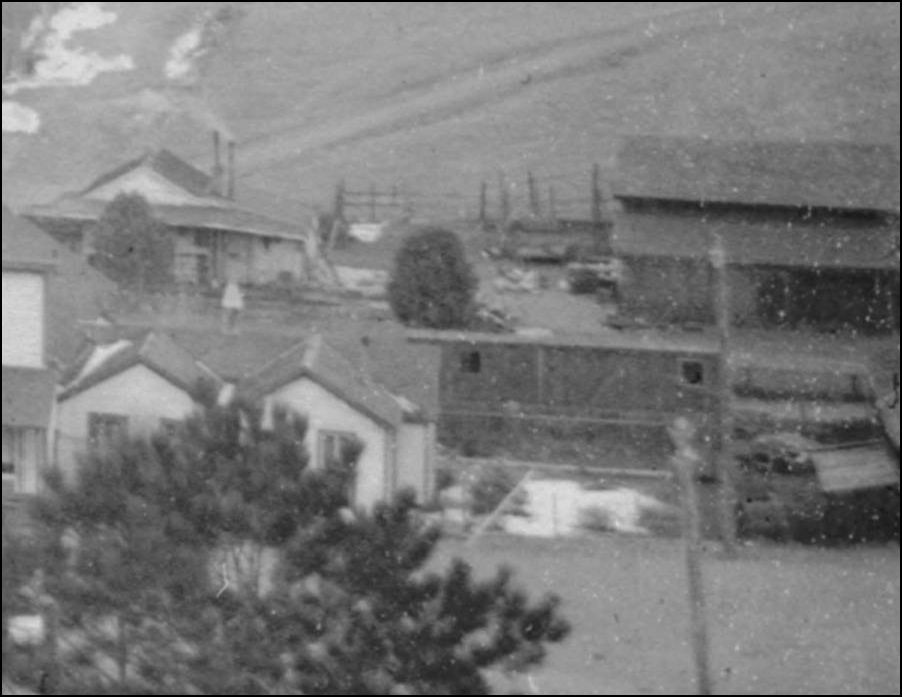 http://cdm16079.contentdm.oclc.org/cdm/fullbrowser/collection/p15330coll22/id/12030/rv/singleitem/rec/2
UpSideDownC
in New Zealand |
Re: The C&S Pine Grove Sandhouse.
|
This post was updated on .
This inter-hemispheric discussion is getting interesting!
To recap John's TOTC station facilities list for Pine: Pine Grove 1898 Depot 24’ x 38’ of wood Coal Bin 14’ x 226’ wood Coal Chutes 10’ x 25’ wood Road Masters Office 10’ x 14’ wood Tool House 10’ x 14’ wood Sand House 6’ x 9’ wood I think you're right, I was confusing 2 small buildings. I think the sand house (6'x9') is way back behind the depot, near the crotch of the wye. The similar sized building closer to the front of the depot, out near the west wye turnout was more likely the depot privy, even a small southwest facing window, to help see what your doing! The tool house was more likely on the far side of the coal chutes to the east. In the McClure photos, all the railroad buildings, except what I think of as the sand house, are freshly painted:  This view from the south seems to be contemporary to the first (and I've been suspecting that it is also by McClure): 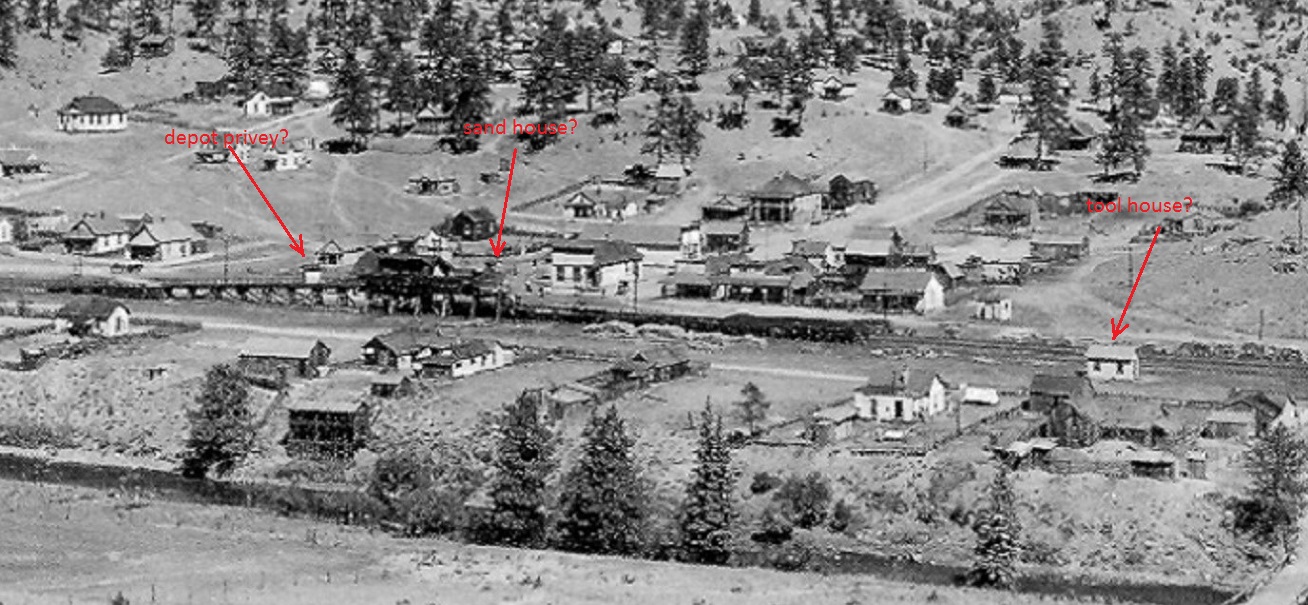 I guess what I'm calling the "tool house" could be "Road Master's Office" as they were the same size, and the building as viewed from the south has windows. A companion photo to the 1929 Denver Water Board special at the coaling tower, shows the "Tool House" vs "Road Master's Office" from the north, likely painted CB&Q red: 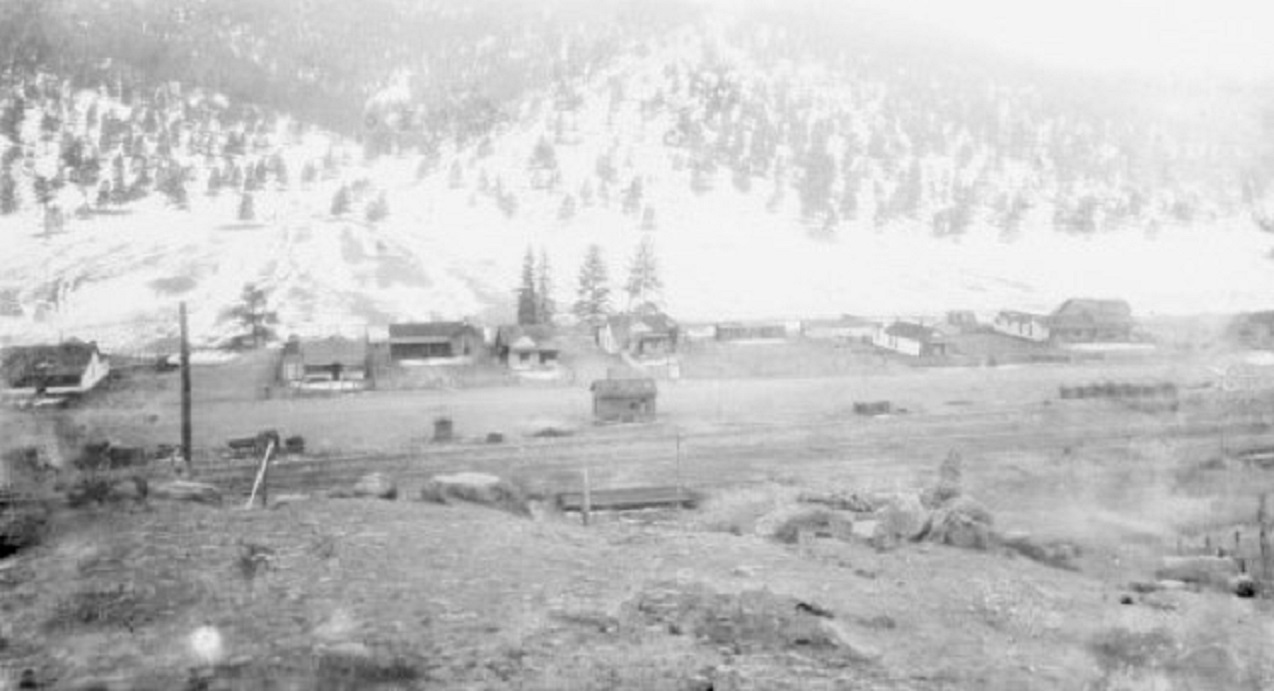 To put things together, I think the depot privy is missing in the 1929 Sanborn photo because it is hiding (and not in plain sight):  The privy is present in the contemporary 1929 Denver Water Board special at the coaling tower that you posted above. It makes more sense to me that the sand house would have been originally located near the ash pit, to allow idle helper engines to be serviced while spotted on the west leg of the wye. Remember, there was a full time hostler stationed at Pine to tend to all the helper engines. That practice began long before the coaling chutes were built, my best present guess being 1890 for chute construction. It probably ended when traffic declined in the 19teens and helpers began running through, out of Denver. Thanks for helping me sort all this out.
Jim Courtney
Poulsbo, WA |
Re: The C&S Pine Grove Sandhouse.
|
Jim,
where does the extension out back of the Depot fit into all this? Is that your Roadmaster's office perhaps. What you labled as the Privy, having a Window in that would be an oddity. It doesn't help that the whole town seems to like the lighter shades of paint either. I'm still backing the Structure enclosed in the Trestle as the Sandhouse and it appears not to occupy more than halfdeep of the Bent. Intermediate Coaling stations do not normally have a large bin capacity like a Terminal or Loco change point with an Enginehouse. Has anyone got anything on the Sanding facility at Dickey?  http://cdm16079.contentdm.oclc.org/cdm/fullbrowser/collection/p15330coll22/id/12030/rv/singleitem/rec/2
UpSideDownC
in New Zealand |
Re: The C&S Pine Grove Sandhouse.
|
I think you may be onto something, Chris.
If the depot is 24 foot wide, the gabled extension in the back would look to be about 14 foot long, so it may well be the Road Masters Office. It would make sense to be attached to the depot as well. I think the small building to the west of the depot is the privy, window or no, due to its close proximity to the front of the depot, for the convenience of passengers. Since it was front and center, so to speak, it was likely painted to match the depot. I can't quite buy the shed under the trestle ramp as the sand house, though. John's facility list of 1898 lists the sand house as present, but in the c1910 view from the south that I posted, nothing is visible under the trestle, so it seems to be a later addition:  Nor is it visible in this late teens, early twenties view: 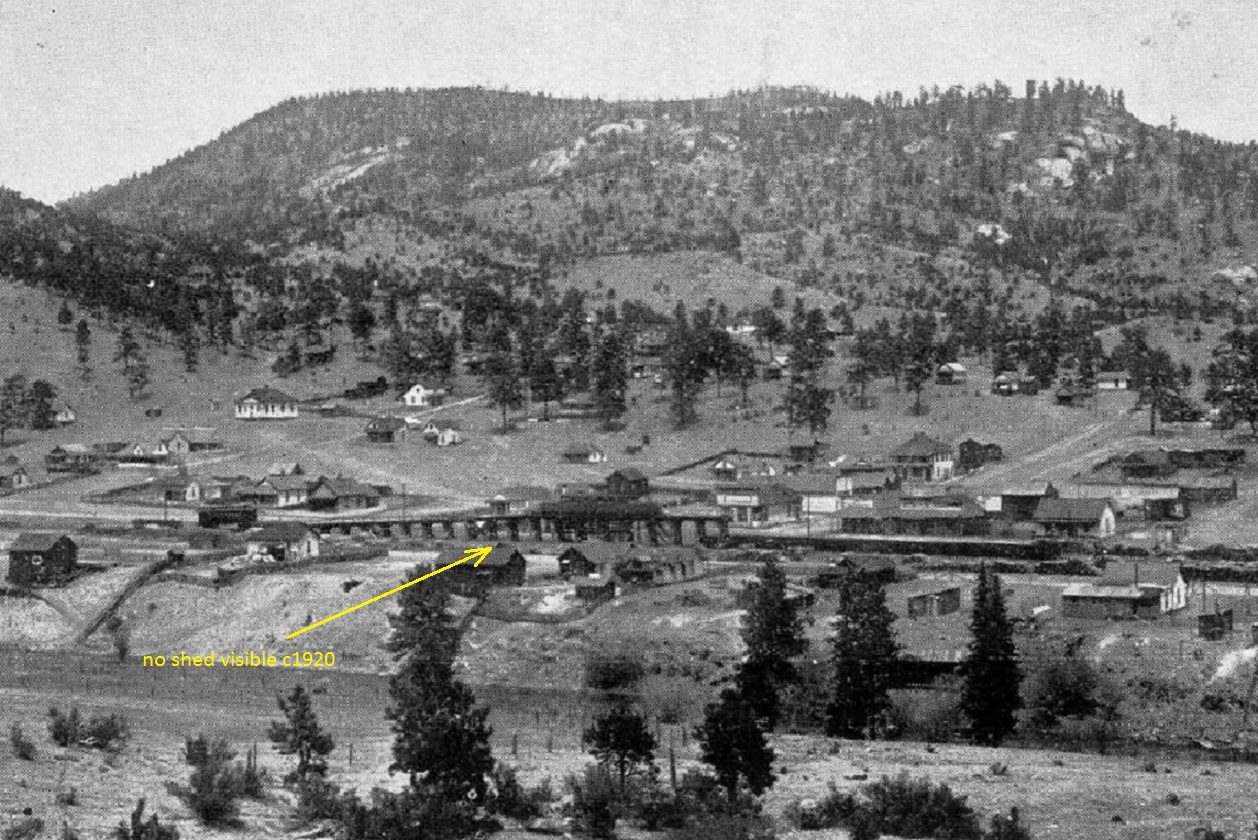 Thanks for taking the time to think this through with me.
Jim Courtney
Poulsbo, WA |
Re: The C&S Pine Grove Sandhouse.
|
In Nth America, did the Watchman have a Shelter or was he expected to occupy the Locomotive Cab?
I ask this because the circled building that is between the Wye leg and the Depot, with a window seems to be about the size of a doubled telephone booth, very similar to the Pilot's (herder?) hut that we had at the entrance to our larger yards. He'd have to shelter somewhere surely. And Jim, I like sitting around the internet table at Darel's Place having these discussions....... 
UpSideDownC
in New Zealand |
Re: The C&S Pine Grove Sandhouse.
|
As to your question about the engine watchman vs hostler, I assume he was up and about watching the engines, while the engine crew was off duty. If there was a hostler and multiple coal shovelers at Pine at the TOTC, perhaps they all bunked in the flat roofed addition to the back of the depot.
As to what I think is a depot privy, that you describe as a double phone booth, consider the depot privy at Pitkin also taken in 1910: http://digital.denverlibrary.org/cdm/fullbrowser/collection/p15330coll21/id/11068/rv/singleitem/rec/108 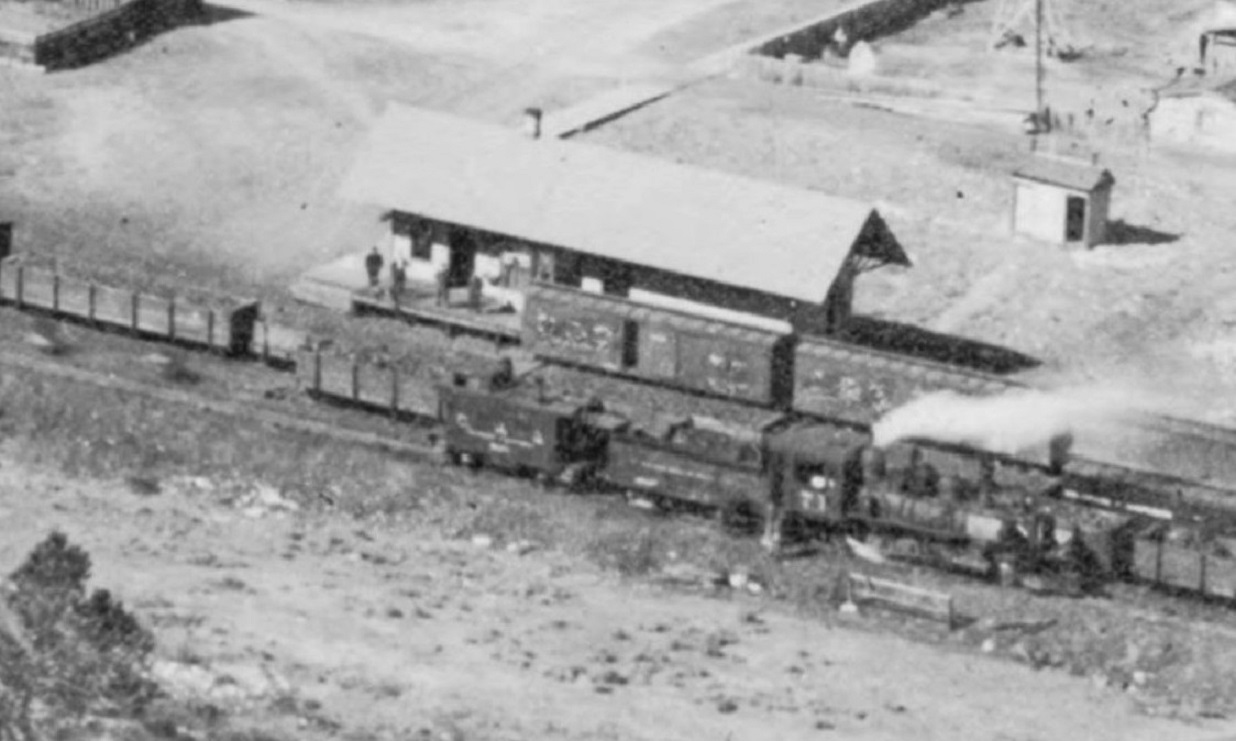 Not too far off thread, there was a coal chute just to the right, in Pitkin. Notice that the "Pitkin Privy" is about the same size as the little structure at Pine, is painted to match the depot, and has two doors, kind'a like a "doubled phone booth". Can't tell if has a window though. Is there a rule in New Zealand that outhouses can't have windows?? 
Jim Courtney
Poulsbo, WA |
|
Going back to the ash-pit picture:
 Note that both sheds are in this picture; the first pointed to by the yellow arrow and the second's shadow below the ashpit. Given their relative locations to the track, I think it's more likely that the yellow arrowed shed is the privy, and the shadow is of the sand house. This picture also appears that it shows a door on the track-side, which wouldn't make much sense for a privy:  Cheers, Jeff. |
Re: The C&S Pine Grove Sandhouse.
|
In reply to this post by Jim Courtney
Can't say I've seen Outhouses of the non-flushing variety with windows at all, I once sought them out on my trips for photographs, although my NZ experience was only with the one at my Uncles farm when I was very young....and I avoided it like the plauge.
 Definitely no window in there hence my asking about a shelter for the Watchman. Definitely no window in there hence my asking about a shelter for the Watchman.
As for the picture of my HO Coalingtrestle, I can only find the one picture from 1985/6. Remember this wasn't to be an exact C&S model given the Mine type Orebins used for lack of measurements or detailed photographs for my freelance line, and built from only the photographs in Mineral Belt II. The curve in the print makes the Bents look slanted but I assure you they are upright and the gap in the off-side roof was the removable panel to see the interior. It appears in hindsight I had borrowed heavily from the pictures of the Pine Grove Chutes as well as standard Trestle construction and ran out of time to build the Stairway before the convention deadline due to getting transferred out of my original Loco Depot. Can't say I have any memory of why I arrived at including those windows in the Shed either. Ugh, I so want to turn back the clock! 
UpSideDownC
in New Zealand |
|
In reply to this post by Jim Courtney
I have 2 Outhouses to excavate. The one by the Depot seemed to contain a lot of whiskey bottles...
The old ones in town were basically pits covered by a movable building, when they filled up a new pit was dug, the Outhouse moved and the old one covered up. The alternate would have been to dig them out.... I do not know what was common practice for the Railroad. Nor do I recollect any stories fro the era about them. The ones for the Hotel seemed to be in the same position which suggests that they were emptied? I also understand the the Como Coal Chutes were those originally slated for Breckenridge and then they changed their minds during construction and built them in Como. I would imagine it much more likely if there were Chutes no longer needed that they would be moved instead of being abandoned and new ones built. |
|
Some of the Breckinridge photos on DPL show the partially built chute.
|
|
Administrator
|
Earlier in this thread there was discussion of the number of chutes increasing at Como. This may be where they came from. Interesting, thanks!
|
Re: The C&S Pine Grove Sandhouse.
|
This post was updated on .
In reply to this post by Chris Walker
Great looking model, Chris. I think it well captures the proportions of the UP standard coal bins that Jeff Ramsey posted with regard to Como. And I take it that you worked from photographs without access to plans. I think the windows add interest to the usually plain, butt-side of the coal bins at Como that show up in so many photos.
Don't perseverate about how you would have built the model today, with more information at hand. At least you've actually built a model of C&S coal chutes--all I seem to do is think about building one. Jim
Jim Courtney
Poulsbo, WA |
|
In reply to this post by ComoDepot
Perhaps we should begin a new thread--"The Outhouses of the C&S". But that would require more information than I'm privy to . . .
Jim Courtney
Poulsbo, WA |
|
OK I couldn't resist, how about "privy two"?
Lee Gustafson |
|
Behind the ruins of the Pacific Hotel you can see a 2-hole brick privy in perfectly good shape.
|
Re: Como and Outhouses in General
|
In reply to this post by Jim Courtney
Didn't we go there in the discussion of Silver Plume 
UpSideDownC
in New Zealand |
|
In reply to this post by Robert McFarland
Robert, Please share as I can't see what you're on about....but I did find a nice illustration of a Harp Derail for Jeff. 
UpSideDownC
in New Zealand |
|
In reply to this post by Lee Gustafson
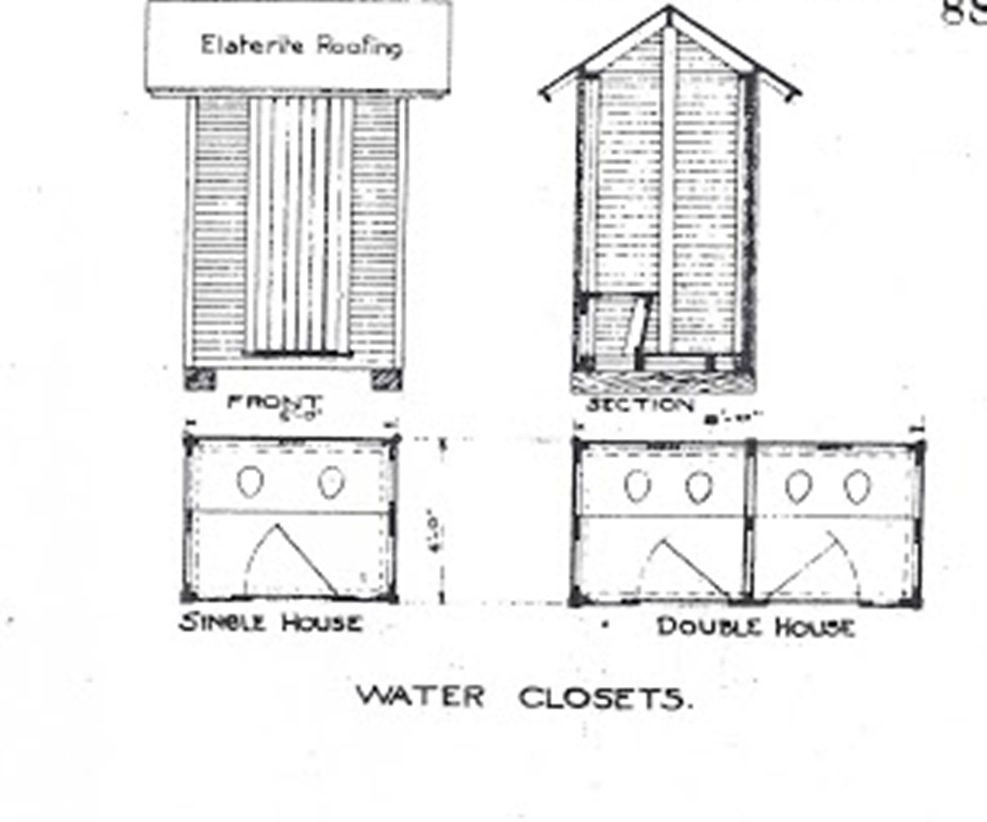 From C&S Common Standards: Outbuildings, in the "Files" section. Lee, on the C&S, even the small outhouses were "privy two".
Jim Courtney
Poulsbo, WA |
«
Return to C&Sng Discussion Forum
|
1 view|%1 views
| Free forum by Nabble | Edit this page |

